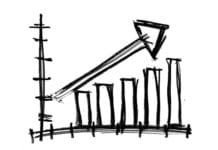History
As a concept, the history of derivatives can be traced back to the ancient Greek civilization where it was used by olive farmers. This concept started developing in other parts of the world as well with farmers using it to protect themselves against environmental or other future uncertainties, thus giving birth to commodity contracts. Futures emerged in Osaka, Japan in the mid-seventeenth century. Rice farmers there started entering into standardized contracts to sell their produce at a predetermined price to protect themselves against weak market prices during the harvest season.
Later, in 1848 the Chicago Board of Trade (CBOT) started facilitating trade in forward contracts for commodities. This was institutionalized in 1865 when CBOT became the first exchange where futures contracts could be traded, much like it is done today. In addition to dealing in commodities, several exchanges came to the fore which dealt in financial derivatives as well. This included treasury bonds, bills, and currencies.
Meaning
Derivatives are financial instruments that derive their value from the value of other assets, known as ‘underlying’ asset’. Derivatives can be based on a wide array of asset classes which include:
- Financial assets such as equities, debts, bonds, currencies as well as indices,
- Agricultural produce such as grains, coffee, pulses, and cotton,
- Metals such as gold, silver, copper, and aluminium,
- Energy sources such as crude oil, natural gas, electricity, coal, etc.
At its core, ‘derivatives’ is a risk management tool for anyone having an underlying risk exposure based on the future price of a financial asset or a commodity. It works on the principle of transferring the price risk from one party to another who is willing to take that risk in anticipation of financial benefits in the future.
From an investor’s perspective, a derivative is an agreement to trade a certain product at a certain price on a future date based on a combination of speculation and/or their understanding of how that product is likely to be priced in the future. Thus a derivative helps an investor to make money or avoid possible losses by speculating on the future value of an underlying asset.
Price discovery and price risk management are the most crucial functions that the derivative market performs, especially from a commodities perspective. Driven by actual valuations, demand, and expectations from the market help improve the accuracy of price discovery in the market for any commodity. This, in turn, enables participants with a lower appetite of risk to transfer it to those who are willing to take risks in anticipation of a good return at a future date.
Derivative contracts have been traded for centuries before the emergence of a formal derivatives market. However, trade-in an unorganized sector results in conflicts and defaults. With regulated intermediaries in place, the scope for off-market trades is negligible thus allowing the regulator to monitor them more efficiently. This not only benefits all traders and stakeholders but also helps bring stability to the overall financial system.



